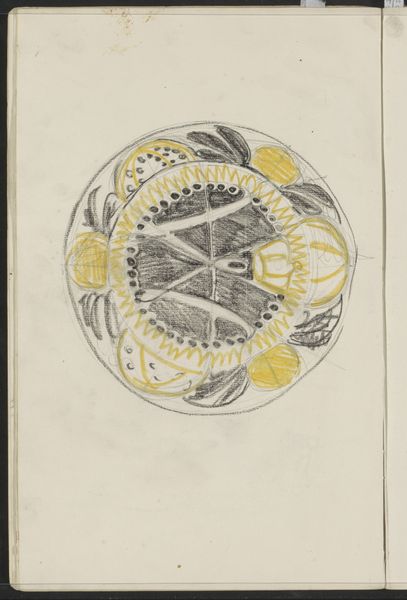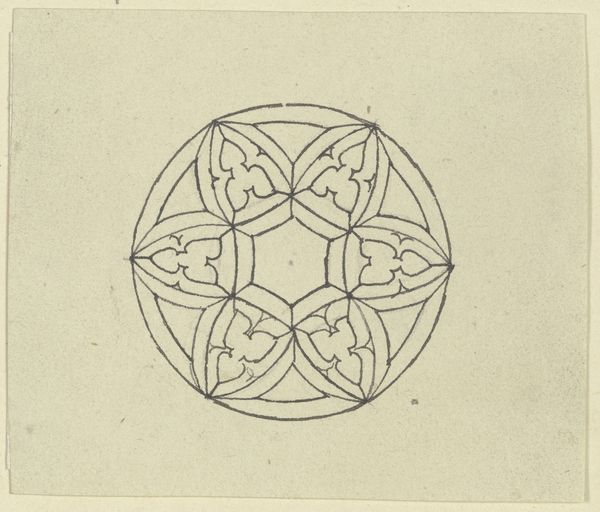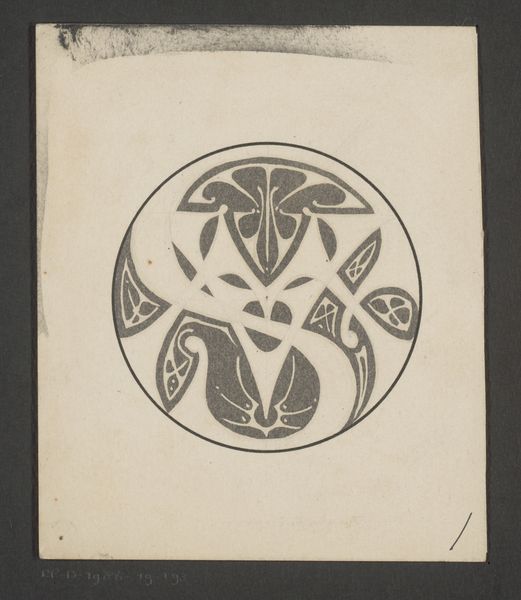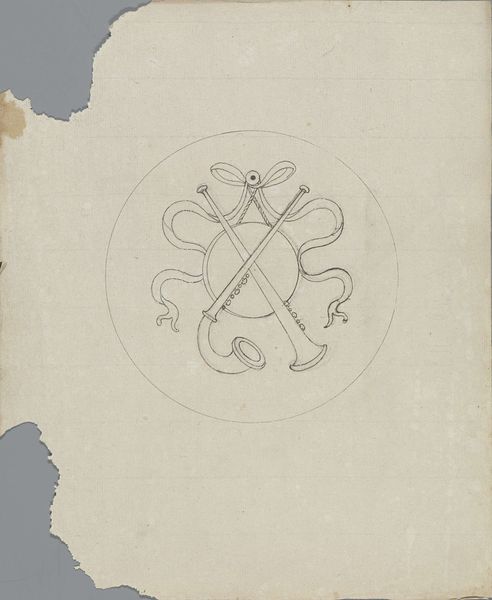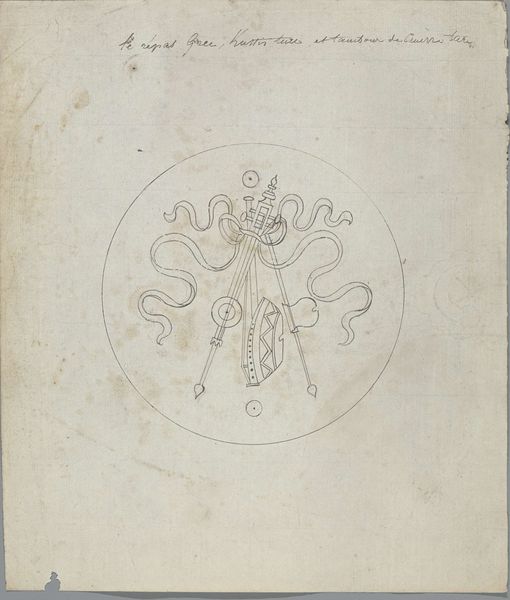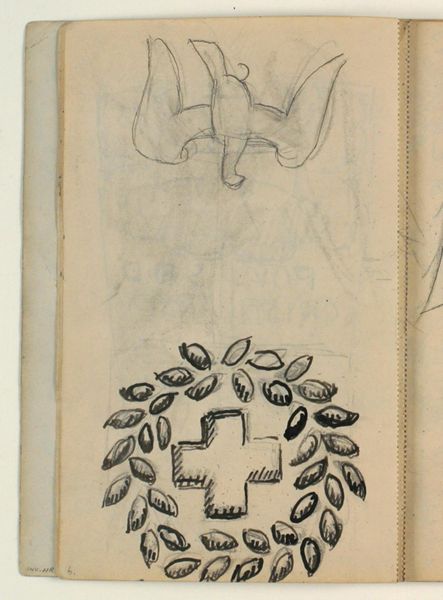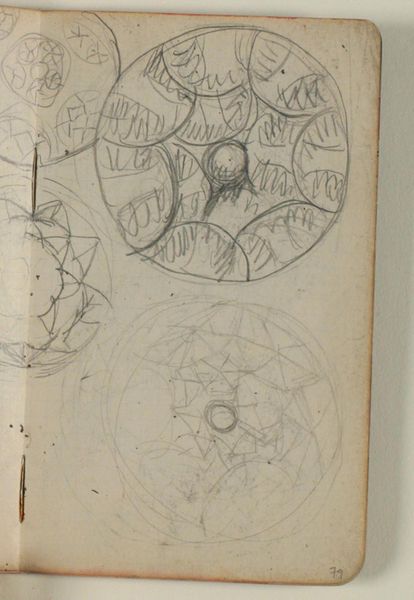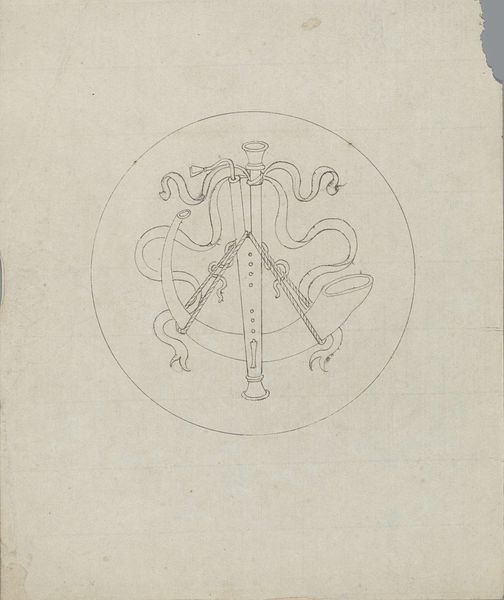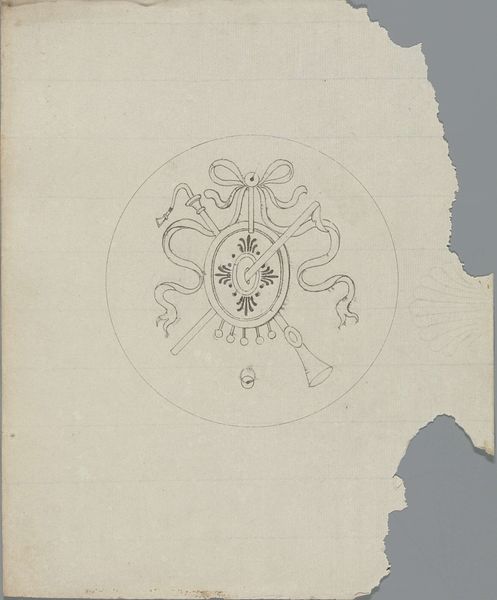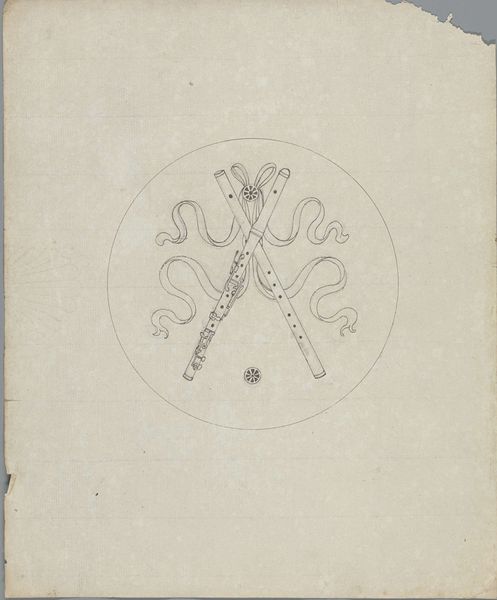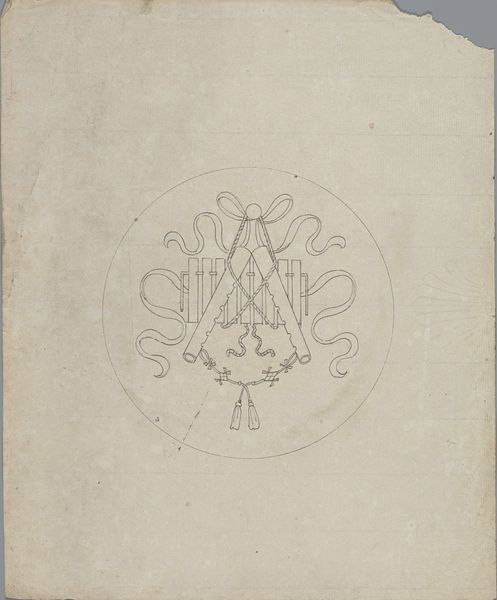
drawing, pencil
#
drawing
#
art-nouveau
#
pencil sketch
#
form
#
geometric
#
pencil
#
line
Copyright: Rijks Museum: Open Domain
Curator: Here we have Carel Adolph Lion Cachet’s "Cirkel met plantmotieven," a pencil drawing made sometime between 1874 and 1945. Editor: My first impression is of something caught in between realms. A seed of Art Nouveau fighting with geometric constraint, almost like conflicting ideologies vying for dominance on the page. Curator: Absolutely, the geometric divisions fight against the burgeoning Art Nouveau impulses; the floral motifs are rigidly contained, which really speaks to the social constraints artists felt even when exploring seemingly apolitical subjects. What is acceptable ornamentation and for whom becomes a really interesting question here. Editor: It’s curious how that plays out in the composition. Circles, traditionally symbols of wholeness and the eternal, are here fragmented by straight lines and compartmentalized. It feels almost like a deconstruction of those core symbolic meanings. I see a denial of traditional symmetry. Curator: I agree. The "natural" world here becomes mediated and controlled. Given the timeline, one can’t help but wonder about the impact of burgeoning industrialization and how nature was perceived and used during that era. The rigid, almost scientific approach perhaps mirrored a societal shift. Editor: Also the tension of dark and light…The sketch, executed in pencil, has strong shading which highlights this opposition. The stark contrasts remind me of old woodcut prints, yet it retains this soft, preliminary feel. Curator: And we shouldn't ignore its clear engagement with the aesthetics of the Art Nouveau movement – the swirling forms are classic, but subverted. What does this modification represent for its era? Were there conversations it hoped to begin regarding societal structures or gender norms, particularly those of the domestic sphere? Editor: It makes you wonder, doesn't it? Something that begins as an attractive pattern carries unexpected critical weight when one starts investigating its components. It's an example of how decorative expression is more than meets the eye, maybe. Curator: Precisely, these conversations surrounding constraints, industry, and art’s social role remain exceptionally important today.
Comments
No comments
Be the first to comment and join the conversation on the ultimate creative platform.
